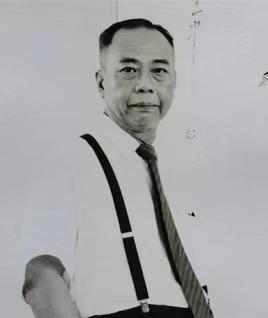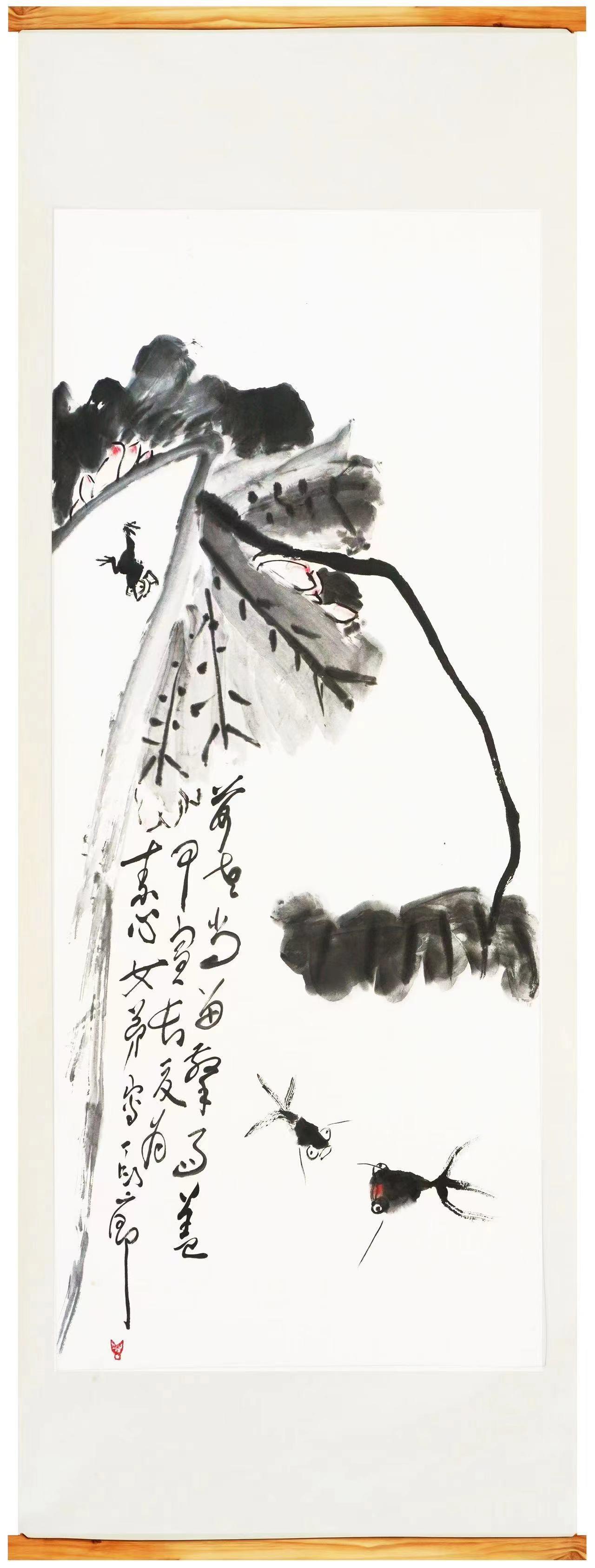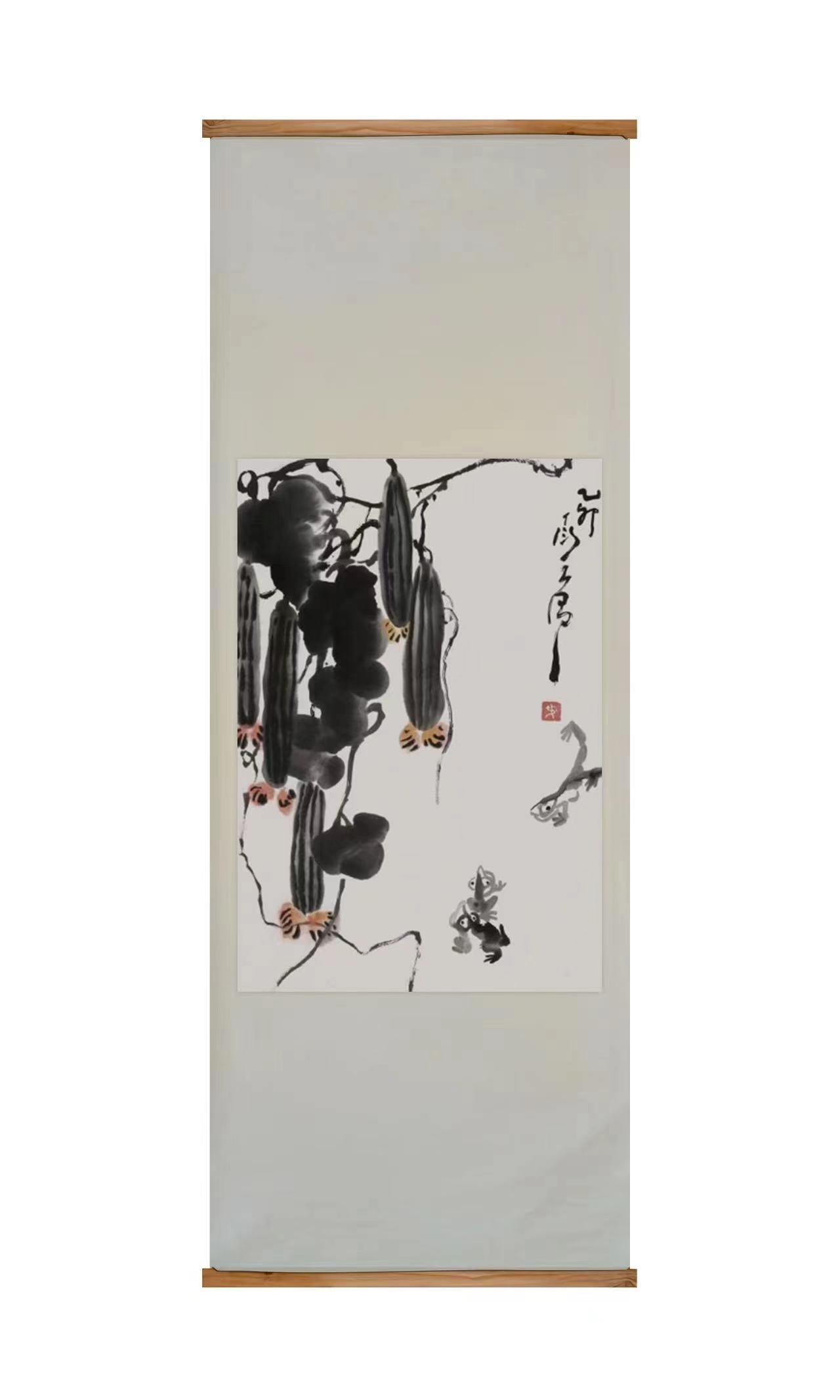Frogs leap, two goldfish swim gracefully in a pond, and lotus flowers bloom. The composition vividly expresses the vitality of nature. All the elements depict the harmonious coexistence of various creatures in nature.
Painted in 1974, Yue Yue He Pond is one of Ding Yanyong’s masterpieces. It will be auctioned in Singapore early next year.
 A portrait of Ding Yanyong. (PROVIDED TO CHINA DAILY)
A portrait of Ding Yanyong. (PROVIDED TO CHINA DAILY)
Born in Maoming county, Guangdong province (now Gaozhou city), Ding, also known as "Ding Gong" (1902-78), was a significant figure in the modern Chinese art world.
He was hailed as both the “Matisse of the East” and the “Modern Bada Shanren”. He and fellow Guangdong artists Lin Fengmian and Guan Liang, were known as the “Three Heroes of Guangdong”. They forged a close friendship, held joint exhibitions, and sought to create a unique Chinese modern art that harmoniously blended Eastern and Western styles, diverging from the prevailing art trends of their time.
In 1957, Ding was invited by Qian Mu to join New Asia College, where he played a pivotal role in establishing the college’s two-year art major, which later became the precursor to the Art Department of The Chinese University of Hong Kong. This establishment marked the first visual arts department in Hong Kong, laying the foundation for higher art education in the region.
READ MORE: A fine blend of the East and West
Ding’s art seamlessly combines traditional Chinese ink painting with innovative elements, resulting in distinctive and captivating artworks. Renowned worldwide for his proficient techniques and unique creative style, Ding’s ink paintings resemble vivid poems that convey profound thoughts and emotions. These artistic treasures showcase technical proficiency, creativity, deep emotional resonance, and profound cultural significance. Incorporating elements of traditional Chinese culture, Ding Yanyong’s works serve as a bridge between Eastern and Western cultural dialogue, making them invaluable in cross-cultural exchanges.
In this artwork, Ding skillfully captures the movement and charm of a frog using only a few strokes. The composition is rich, and the use of orange-yellow hues to embellish the plants adds vitality to the entire painting. Ding Gong’s keen powers of observation allow him to extract the essence of objects and present them with concise and smooth lines. This is why Ding Gong’s works hold immense value in the art investment market.
 Ding Yanyong's "Yue Yue He Pond". (PHOTO PROVIDED TO CHINA DAILY)
Ding Yanyong's "Yue Yue He Pond". (PHOTO PROVIDED TO CHINA DAILY)
The Unique Fusion of Chinese and Western Influences
Ding Yanyong’s artistic journey can be roughly divided into two stages, with 1949 serving as a turning point when he relocated from the Chinese mainland to Hong Kong. In the early stage, he focused more on the development of Western painting techniques, whereas in the later stage, he shifted his creative focus to ink works. This transition from Western painting to Chinese painting can be seen as a turning point, but in reality, it represents a form of artistic transcendence.
ALSO READ: Painter who likes to make a scene
After graduating from high school, he was sent by the Guangdong provincial government to study drawing under Fujishima Takeji in Japan. He then enrolled at the Tokyo School of Fine Arts. Graduating in 1925, Ding returned to China where he became a pioneering exponent of Western painting.
It was not until the early 1930s that he began to explore the work of Chinese masters like Bada Shanren, and he discovered an affinity between them and his Western idols. “They are one and the same,” he wrote in his diary, “except that China preceded the West by 700 years.”
 Ding Yanyong's "Flower and Frog". (PHOTO PROVIDED TO CHINA DAILY)
Ding Yanyong's "Flower and Frog". (PHOTO PROVIDED TO CHINA DAILY)
In 1969, Professor Li Keman published an article praising Ding Gong’s ability to naturally express the unique characteristics of Chinese artists, despite the seemingly contradictory nature of Chinese and Western painting methods. Professor Li noted that although Ding Yanyong used different tools for his oil paintings and Chinese paintings, in terms of form and artistic conception, he successfully combined Chinese and Western elements. Ding’s ability to draw from the strengths of both schools and merge traditional and modern characteristics sets him apart as an exceptional artist.
Ding’s works are not just art forms but also represent a spiritual pursuit and cultural inheritance. They offer endless visual enjoyment and profound spiritual connections.
They offer a glimpse into a simple, direct, yet beautiful and mysterious realm that has captivated art lovers and collectors alike.


